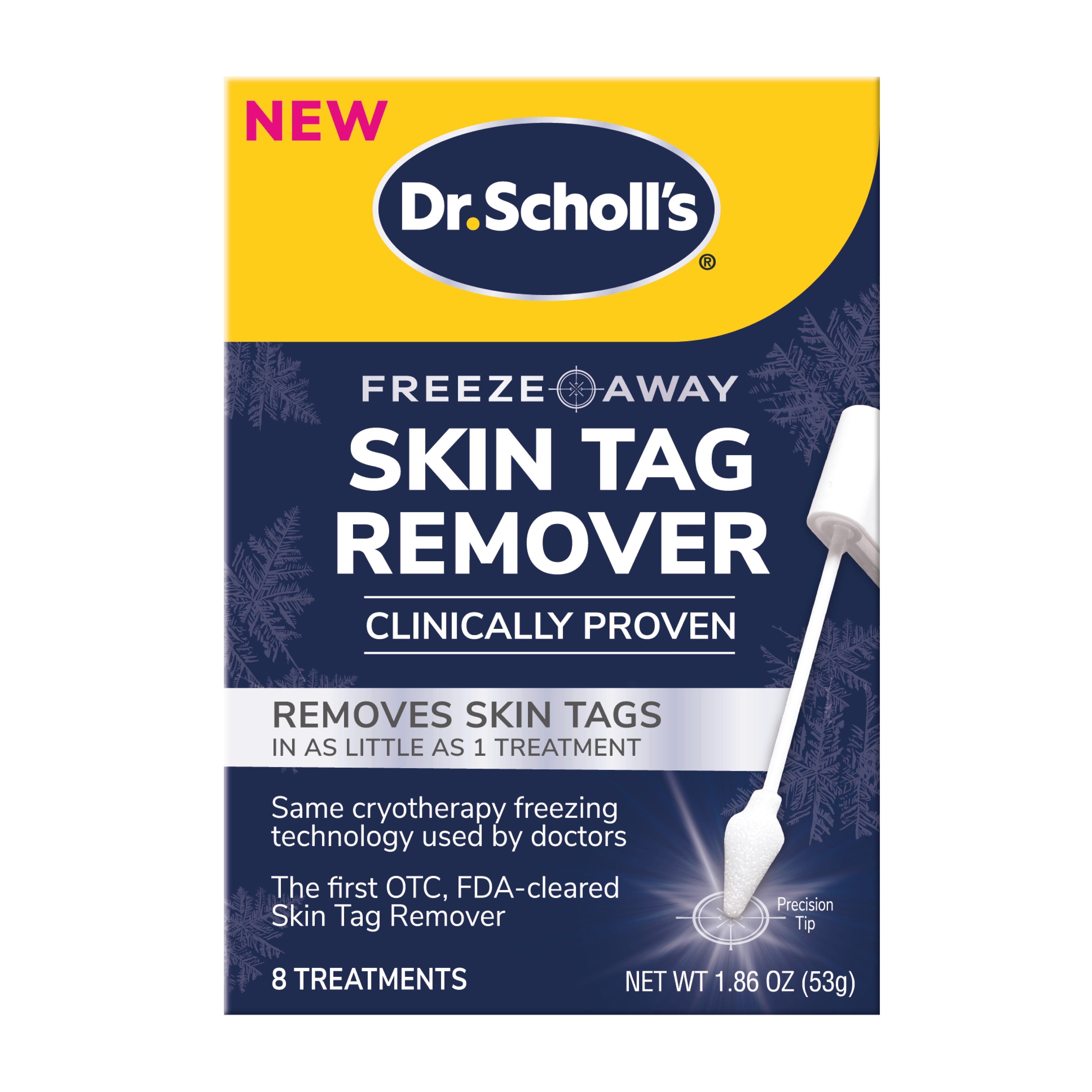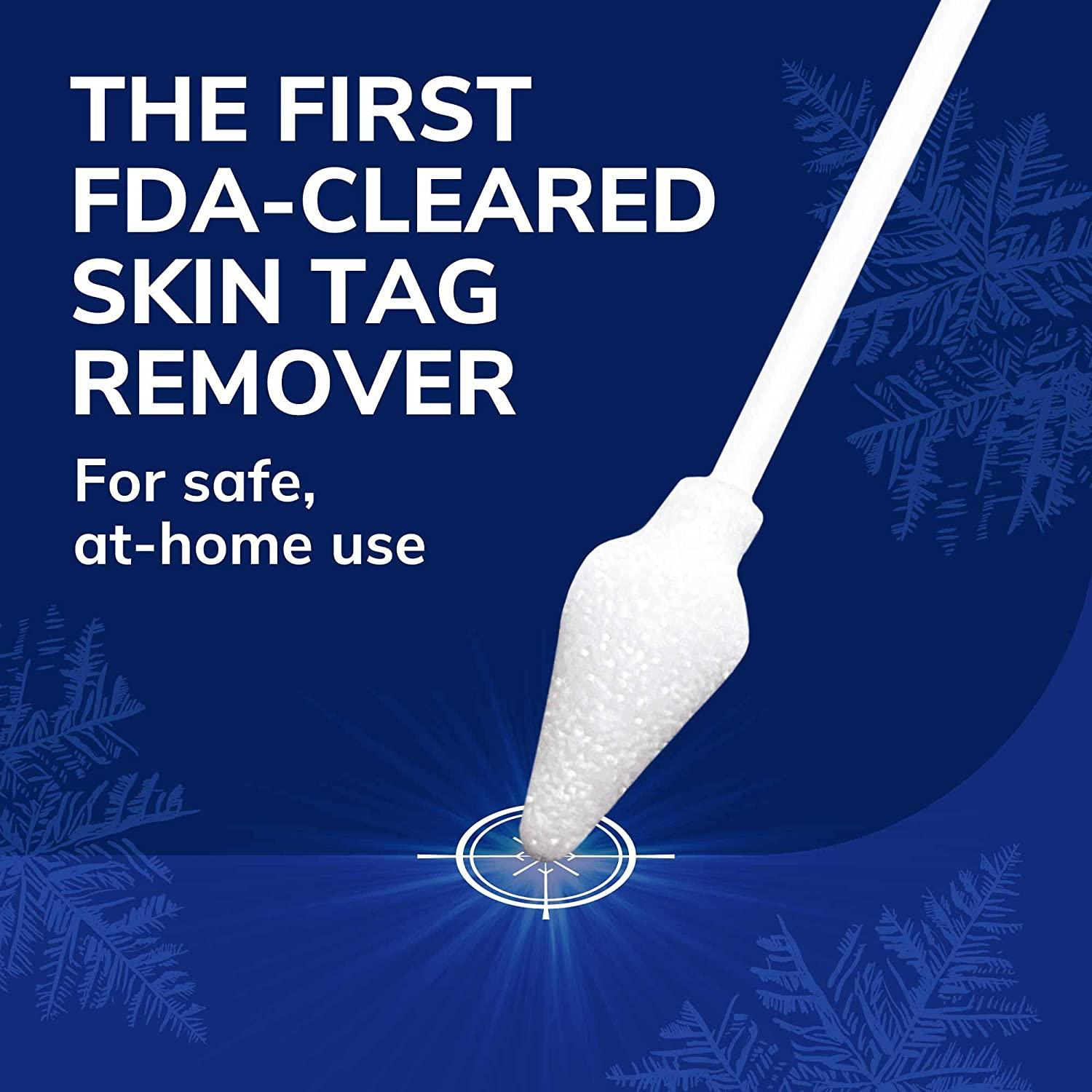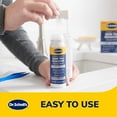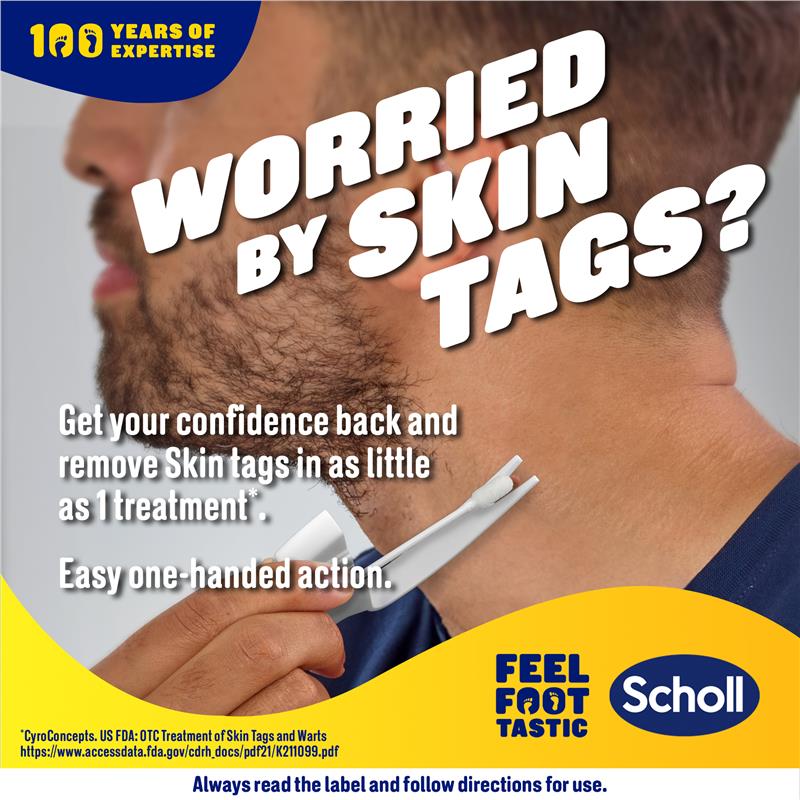Does Dr Scholl's Freeze Away Work On Skin Tags

Imagine this: You're getting ready for a special occasion, feeling confident and ready to shine. But as you reach for your favorite necklace, your fingers brush against a small, fleshy bump on your neck. It's a skin tag, and suddenly, your confidence wavers just a bit. You wonder, like so many others, "Could something as simple as an over-the-counter freeze treatment really get rid of this annoying little thing?"
The question of whether Dr. Scholl's Freeze Away effectively removes skin tags is a common one, and the answer is nuanced. While this product is primarily designed for warts, some people wonder if it can be repurposed for skin tags. Let’s delve into the facts, expert opinions, and potential risks to help you make an informed decision.
What Are Skin Tags?
Skin tags, medically known as acrochordons, are small, benign growths that typically appear in areas where skin rubs against skin. Common locations include the neck, armpits, groin, and eyelids. These harmless growths are usually skin-colored or slightly darker, and they are connected to the skin by a small stalk.
These growths are not cancerous and typically don't cause any physical pain. However, they can be bothersome or unsightly for some individuals.
Factors such as genetics, obesity, and insulin resistance may play a role in their development. They are also more common in older adults and people with type 2 diabetes.
Understanding Dr. Scholl's Freeze Away
Dr. Scholl's Freeze Away is an over-the-counter cryotherapy treatment designed to remove warts. The product utilizes a freezing agent, typically dimethyl ether and propane, to rapidly freeze the wart tissue.
This freezing process destroys the wart cells, causing the wart to fall off within one to two weeks. The instructions clearly state its intended use for warts, specifically common and plantar warts.
It's crucial to understand that the packaging and official information from Dr. Scholl's do not list skin tags as a condition the product is intended to treat.
Can It Be Used Off-Label for Skin Tags?
The critical question: Can Dr. Scholl's Freeze Away be used safely and effectively on skin tags, even if it's not the intended purpose? While some individuals may consider using it off-label, experts generally advise against this practice.
Dermatologists emphasize that skin tags and warts are different types of skin growths that require different treatment approaches. Warts are caused by a virus, while skin tags are not.
Dr. Emily Carter, a board-certified dermatologist, explains, "Using a wart remover on a skin tag can lead to unintended consequences, such as skin irritation, blistering, or even scarring. It's best to consult a dermatologist for safe and effective skin tag removal."
Risks and Potential Side Effects
Using Dr. Scholl's Freeze Away on skin tags carries several risks. The freezing agent can damage the surrounding healthy skin, leading to pain, redness, and blistering.
In some cases, improper use can result in hyperpigmentation (darkening of the skin) or hypopigmentation (lightening of the skin) at the treatment site. There's also a risk of infection if the treated area is not properly cared for.
Furthermore, attempting to freeze off a skin tag, particularly in sensitive areas like the face or groin, could lead to nerve damage or other complications.
Professional Skin Tag Removal Options
For safe and effective skin tag removal, several professional options are available. These procedures are typically performed in a dermatologist's office and are quick, relatively painless, and have a low risk of complications.
Common methods include cryotherapy (using liquid nitrogen), surgical excision (cutting off the skin tag with a scalpel), electrocautery (burning off the skin tag with an electric current), and ligation (tying off the base of the skin tag with surgical thread). Each method has its advantages and disadvantages, and the best option depends on the size, location, and number of skin tags being treated.
Cryotherapy
Professional cryotherapy involves applying liquid nitrogen to the skin tag, freezing it off. This is generally a quick and effective method, although it may require multiple treatments.
Surgical Excision
Surgical excision is a straightforward procedure where the skin tag is cut off with a scalpel. This method is often used for larger skin tags and may require a local anesthetic.
Electrocautery
Electrocautery uses an electric current to burn off the skin tag. This method is precise and can effectively remove skin tags of various sizes.
Ligation
Ligation involves tying off the base of the skin tag with surgical thread, cutting off its blood supply. The skin tag will eventually fall off on its own. This is a good option for smaller skin tags.
Expert Opinions and Recommendations
Dermatologists universally recommend against using over-the-counter wart removers like Dr. Scholl's Freeze Away for skin tag removal. They emphasize the importance of seeking professional evaluation and treatment to minimize risks and ensure optimal results.
"It's always best to have a dermatologist examine any skin growth to rule out other potential conditions," advises Dr. Sarah Chen, a leading dermatologist. "Self-treating with unapproved methods can delay proper diagnosis and treatment, potentially leading to complications."
The American Academy of Dermatology also advises against self-treating skin tags and recommends consulting a board-certified dermatologist for safe and effective removal.
A Note on Home Remedies
While many home remedies for skin tag removal circulate online, such as apple cider vinegar, tea tree oil, and dental floss, their effectiveness and safety are questionable. These methods may cause skin irritation, inflammation, or even infection.
It's important to approach these remedies with caution and to consult a dermatologist before trying them. The risk of adverse reactions often outweighs any potential benefits.
Ultimately, professional treatment is the safest and most reliable way to remove skin tags without causing harm to the surrounding skin.
Conclusion
So, does Dr. Scholl's Freeze Away work on skin tags? The short answer is no, and it's not recommended. While the temptation to use an easily accessible over-the-counter product might be strong, the risks associated with off-label use outweigh any potential benefits.
Choosing a safe and effective removal method is paramount. Instead of risking skin damage or complications, consulting with a dermatologist will ensure that your skin tags are removed safely and professionally, leaving you feeling confident and carefree.
The peace of mind that comes from knowing you've chosen the right path for your skin's health is invaluable, allowing you to focus on what truly matters – feeling your best and embracing every moment without the distraction of those little bumps.


















